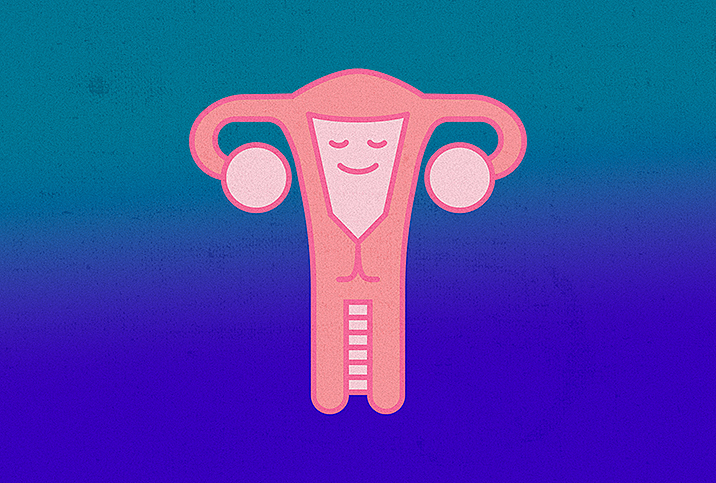Endometriosis Doesn't Have to Make Your Period More Uncomfortable

Endometriosis can cause extreme challenges, especially during your period, when symptoms such as pelvic pain become more severe. This disorder can also lead to irregular menstrual cycles that make it difficult to track your period and plan for pregnancy.
Here’s more about how endometriosis affects your period, along with tips for successful management.
Period pain
In cases of endometriosis, the tissue that normally lines the inside of the uterus grows outside of it instead, where it becomes trapped. This prevents the tissue from breaking down and leaving the body during menstruation. Trapped endometrial tissue, aka endometriosis implants, can stick to the ovaries and any other tissue in the pelvis and turn into cysts called endometriomas. The cysts can then irritate surrounding tissue and cause the development of scar tissue and adhesions—all of which can trigger pelvic and menstrual pain.
Menstrual pain related to endometriosis may also be accompanied by abdominal and lower back pain. If you have endometriosis, other symptoms you may experience during your period include diarrhea, constipation, bloating, nausea, fatigue and pain during urination and bowel movements.
Irregular cycles
Irregular menstrual cycles are common with endometriosis due to the way tissues become trapped and build up during the course of each month. This leads to longer menstrual periods when all of the tissue is fully shed or shorter periods when bleeding is extremely heavy. Some women with endometriosis may experience bleeding between periods.
Ways to manage endometriosis during your period
If you have endometriosis and need help managing your condition, work with your doctor to find solutions that can reduce your symptoms and make your periods more regular. In the meantime, take the personal steps that work for you.
Use different menstrual products
Heavy bleeding can prove highly inconvenient if you need to change pads or tampons every few hours, especially when you’re away from home for long periods of time.
If you tend to bleed heavily during your monthly period, try using menstrual products designed for substantial flows. Menstrual cups fit snugly against your cervix to capture blood and need to be replaced every 12 hours. There are also many brands of high-absorbency pads and underwear that are relatively thin and offer maximum protection for hours.
Take pain relievers
Some doctors recommend taking over-the-counter pain relievers such as ibuprofen or acetaminophen to reduce pelvic pain and abdominal cramps related to endometriosis. If you’re against using pain relievers, take a warm bath or use a heating pad to relax your pelvic muscles and reduce pain and cramping.
Consider hormone therapy
Hormone therapy is a common treatment for endometriosis because it reduces the hormonal fluctuations that contribute to the thickening and growth of endometrial tissues. Birth control pills and progesterone injections are among your options to suppress the growth of endometriosis. Sometimes surgery is required to remove endometriosis implants, which is then followed by hormone therapy.
Try acupuncture
Acupuncture is a form of traditional Chinese medicine used for centuries to treat pain, including pelvic pain associated with endometriosis. In a study published in Medical Acupuncture, researchers found that acupuncture was effective at reducing chronic pelvic pain in a woman with endometriosis for up to six months.
Untreated and unmanaged endometriosis can lead to complications that include infertility. Make an appointment with your doctor immediately if you need help managing endometriosis or if you think you may have endometriosis based on your symptoms.

















